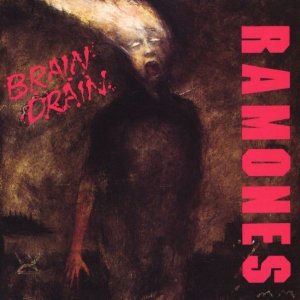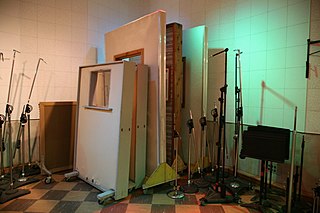Related Research Articles

Glyn Thomas Johns is an English recording engineer and record producer. He has worked with many of the most famous rock recording acts from both the UK and abroad, such as the Rolling Stones, the Beatles, the Who, Led Zeppelin, the Kinks, Eagles, Bob Dylan, the Band, Eric Clapton, the Clash, the Steve Miller Band, Small Faces, the Ozark Mountain Daredevils and Joan Armatrading.

A recording studio is a specialized facility for recording and mixing of instrumental or vocal musical performances, spoken words, and other sounds. They range in size from a small in-home project studio large enough to record a single singer-guitarist, to a large building with space for a full orchestra of 100 or more musicians. Ideally, both the recording and monitoring spaces are specially designed by an acoustician or audio engineer to achieve optimum acoustic properties.

"When the Levee Breaks" is a country blues song written and first recorded by Memphis Minnie and Kansas Joe McCoy in 1929. The lyrics reflect experiences during the upheaval caused by the Great Mississippi Flood of 1927.
Shure Incorporated is an American audio products corporation. It was founded by Sidney N. Shure in Chicago, Illinois, in 1925 as a supplier of radio parts kits. The company became a consumer and professional audio-electronics manufacturer of microphones, wireless microphone systems, phonograph cartridges, discussion systems, mixers, and digital signal processing. The company also manufactures listening products, including headphones, high-end earphones, and personal monitor systems.

Brain Drain is the eleventh studio album by the American punk rock band Ramones, released on May 23, 1989. It is the last Ramones release to feature bassist/songwriter/vocalist Dee Dee Ramone, the first to feature Marky Ramone since his initial firing from the band after 1983's Subterranean Jungle and the band's last studio album on Sire Records. It ends with their unlikely seasonal song "Merry Christmas ".

A ribbon microphone, also known as a ribbon velocity microphone, is a type of microphone that uses a thin aluminum, duraluminum or nanofilm of electrically conductive ribbon placed between the poles of a magnet to produce a voltage by electromagnetic induction. Ribbon microphones are typically bidirectional, meaning that they pick up sounds equally well from either side of the microphone.

"Communication Breakdown" is a song by the English rock band Led Zeppelin, from their 1969 self-titled debut album. It was also used as the B-side of the group's first single in the US, "Good Times Bad Times". A promotional video was released, with the group miming to the recording, which is included on the Led Zeppelin DVD (2003).
Jeremy Andrew Johns was a British sound engineer and record producer who worked on several well-known rock albums, including the Rolling Stones' Exile on Main St. (1972), Television's Marquee Moon (1977), and a series of albums by Led Zeppelin during the 1970s. His sound is exemplified by Free's album Highway, which he engineered and produced.

"Ramble On" is a song by the English rock band Led Zeppelin. Co-written by Jimmy Page and Robert Plant and produced by Page, and recorded in 1969 at Juggy Sound Studio, New York City and A & R Recording, Manhattan, it serves as the seventh track of their second studio album Led Zeppelin II. The song's lyrics were influenced by J. R. R. Tolkien's fantasy novel The Lord of the Rings.

Beyerdynamic GmbH & Co. KG is a German manufacturer of microphones, headphones, wireless audio systems, and conference systems. Headquartered in Heilbronn, Germany, Beyerdynamic has been family-owned since its founding in 1924.
The Shure SM57 is a low-impedance cardioid dynamic microphone made by Shure Incorporated and commonly used in live sound reinforcement and studio recording. It is one of the best-selling microphones in the world. It is used extensively in amplified music and has been used for speeches by every U.S. president since its introduction in 1965. In 2004, honoring its four decades of "solid, dependable performance", it was inducted into the first-ever TEC Awards TECnology Hall of Fame.

Spill is the occurrence in sound recording and live sound mixing whereby sound is picked up by a microphone from a source other than that which is intended. Spill is usually seen as a problem, and various steps are taken to avoid it or reduce it. In some styles of music, such as orchestral music, jazz, and blues, it is more likely to be accepted or even seen as desirable.

The Coles 4038 is a ribbon microphone produced by Coles Electroacoustics. The microphone was designed and patented by the BBC in the 1950s and was originally known as the STC 4038. The sound of the microphone has been described as "British" with a "BBC politeness", and its appearance has been likened to that of a waffle iron. It is used in both sound recording and radio broadcasting.
A & R Recording Inc. was a major American independent studio recording company founded in 1958 by Jack Arnold and Phil Ramone.

Carl Countryman was president and Chief Engineer of Countryman & Associates of Menlo Park, California.
A reverb effect, or reverb, is an audio effect applied to a sound signal to simulate reverberation. It may be created through physical means, such as echo chambers, or electronically through audio signal processing.

The Shure SM7 is a professional cardioid dynamic microphone, commonly used in broadcasting applications since 1973. Designed by Shure, it has been described as an "iconic" industry standard microphone for its focused, directional sound and its widespread adoption in radio, television and recording studios. In 2007–2008, the SM7B model became popular for professional podcasting.

The Sennheiser MD 421 is a German cardioid dynamic microphone, widely used for speech in broadcasting and for music in live concerts and the recording studio. Introduced in 1960, the internal large-diaphragm transducer element of the MD 421 is still produced unchanged by Sennheiser. The MD 421 is considered a classic, an industry standard. More than 500,000 units have been sold.

The Electro-Voice RE20 is an American professional cardioid dynamic microphone, commonly used in broadcasting applications since 1968. Designed by Electro-Voice using the company's patented Variable-D technology and a large-diaphragm element, it has been described as an industry standard "iconic" microphone for its natural sound and its wide usage in radio, television and recording studios. In 2015, the RE20 was inducted into the TEC Awards Technology Hall of Fame.
References
- ↑ Simmons, Greg (November 27, 2020). "Ribbon Microphones". Audio Technology. Retrieved July 25, 2021.
- ↑ Huber, David Miles; Runstein, Robert E. (2012). Modern Recording Techniques. CRC Press. p. 114. ISBN 9781136117985.
- ↑ "Mixdown's Picks: Beyerdynamic M160". Mixdown. Retrieved July 27, 2021.
- ↑ Hunter, Dave (2012). The Home Recording Handbook. Rowman & Littlefield. p. 274. ISBN 9781476855851.
- ↑ Welch, Chris (October 31, 2013). "Andy Johns on the secrets behind the Led Zeppelin IV sessions". Music Radar. Archived from the original on November 4, 2018. Retrieved July 26, 2021.
- ↑ Owsinski, Bobby (2005). The Recording Engineer's Handbook. Hal Leonard. p. 43. ISBN 9781932929003.
- 1 2 "Beyerdynamic M 160". TEC Awards . Retrieved July 25, 2021.
- ↑ Ramone, Phil (2007). Making Records: The Scenes Behind the Music. Hachette. p. 199. ISBN 9781401388294.
- ↑ Buskin, Richard (August 2004). "Classic Tracks: Michael Jackson 'Black Or White'". Sound on Sound . Retrieved April 19, 2022.